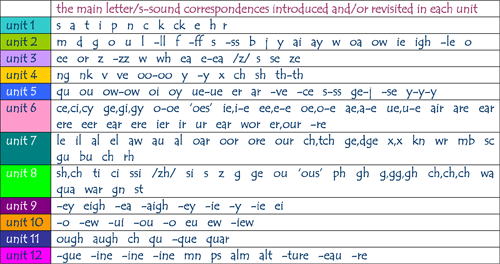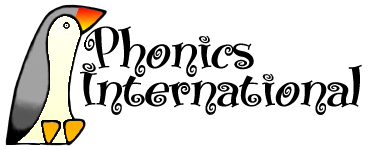 Jolly Phonics is a British produced synthetic phonics scheme. Therefore, sometimes the pronunciation of certain sounds is different to how they are pronounced in Ireland, e.g. “u”, “aw” and even “a”. Kat2 checked it out…
Jolly Phonics is a British produced synthetic phonics scheme. Therefore, sometimes the pronunciation of certain sounds is different to how they are pronounced in Ireland, e.g. “u”, “aw” and even “a”. Kat2 checked it out…
You have to adapt JP to suit the Irish accent as it is written to reflect ‘British received pronunciation’ (I think that’s the correct term.)
Phonics
So why Synthetic Phonics – what's wrong with other methods of teaching reading?
 I have found that the multi-cueing methods which are recommended by our own infant curriculum and which amount to guessing using picture, context and/or initial sound cues, and which are also encapsulated in the Reading Recovery method, to be far less effective when teaching both beginner readers and older strugglers than teaching according to the synthetic phonics teaching principles.
I have found that the multi-cueing methods which are recommended by our own infant curriculum and which amount to guessing using picture, context and/or initial sound cues, and which are also encapsulated in the Reading Recovery method, to be far less effective when teaching both beginner readers and older strugglers than teaching according to the synthetic phonics teaching principles.
How do you explain phonics to parents?
 The following is a link to a simple ‘parents’ guidance’ to support early reading ( by Debbie Hepplewhite – a teacher, synthetic phonics consultant, trainer and advisor and editor of www.rrf.org and www.synthetic phonics.com) which may be of help to you.
The following is a link to a simple ‘parents’ guidance’ to support early reading ( by Debbie Hepplewhite – a teacher, synthetic phonics consultant, trainer and advisor and editor of www.rrf.org and www.synthetic phonics.com) which may be of help to you.
Synthetic Phonics Programme part 4
 The final part of Kat2’s journey into the Phonics International programme outlines the links that it has with Jolly Phonics and how this scheme has many excellent factors that can be brought into the Phonics International Scheme, for example the actions and songs. Read on to see how Kat2 introduced the scheme to her staff at school and how it was integrated into the school plan.
The final part of Kat2’s journey into the Phonics International programme outlines the links that it has with Jolly Phonics and how this scheme has many excellent factors that can be brought into the Phonics International Scheme, for example the actions and songs. Read on to see how Kat2 introduced the scheme to her staff at school and how it was integrated into the school plan.
An Online Phonics Programme part 3 – when Kat2 met Debbie
 Part 3 in Kat2’s series about how she discovered Phonics International, an online Synthetic Phonics programme written by Debbie Hepplewhite. For those using Jolly Phonics in their classroom, this programme is worth checking out. In this post, Kat2 talks about meeting Debbie and how she introduced her to this vast and exciting programme. Kat2 also explains how she adopted this programme into her class. The final segment compares Jolly Phonics to Phonics International and explains how the resources can compliment each other.
Part 3 in Kat2’s series about how she discovered Phonics International, an online Synthetic Phonics programme written by Debbie Hepplewhite. For those using Jolly Phonics in their classroom, this programme is worth checking out. In this post, Kat2 talks about meeting Debbie and how she introduced her to this vast and exciting programme. Kat2 also explains how she adopted this programme into her class. The final segment compares Jolly Phonics to Phonics International and explains how the resources can compliment each other.
An Online Phonics Programme part 2
Continuing on from Kat2’s last article about Phonics International, this post concentrates on she used the Phonics International scheme in her classroom. Part 3, which will be uploaded separately goes into more depth about the program itself and when Kat2 met the author.
Introducing an Online Synthetics Phonics Programme

(Preface from Anseo.net) The following is an article written in January 2007, just before the launch of “Phonics International”, a synthetics phonics programme, which is online. Many Irish schools are using “Jolly Phonics”, which is a synthetic phonics programme and many of the items in this series will be very helpful to them, particularly after the initial stages of the programme. Those who have not bought into a synthetics phonics programme should also read with interest as “Phonics International” is renowned as being excellent. We welcome Kat2 to our team. Some readers may know her from the Education Posts forum, where her help has been greatly appreciated.
